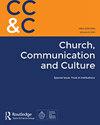Rebuilding trust
Q1 Arts and Humanities
引用次数: 0
Abstract
This MRP is a case study of the Algonquin Regiment’s capabilities to rapidly reconstruct their ranks during periods of extreme casualty loss, between late July and early October 1944. During this time, the Algonquin Regiment, like many other Canadian infantry battalions, experienced a continuous turnover of men due to high casualty rates resulting from the hard fighting in northwest Europe. Although the Algonquins suffered substantial losses from all ranks, they were able to reassemble their companies with new replacements in order to continue their offensive operations. This research argues that previous historical interpretations critical of both Canadian battle performance and the replacement system are challenged by the experiences of the Algonquin Regiment. The MRP calls into question long-standing notions concerning ‘primary group loyalty’ as the key to understanding both unit moral and battle performance. In doing so, this study reinforces the more recent interpretation centred on ‘swift trust’ as a more applicable lens through which to view the experiences, successes and failures of this single infantry battalion. The principal question that this MRP answers is how reinforcements in the Algonquin Regiment influenced overall battle performances during the late summer and early fall of 1944. Acknowledgments I would first like to begin by acknowledging the traditional Anishnaabeg territory that Nipissing University stands on today. Next, I would like to give my sincere appreciation and recognition to the faculty members of Nipissing University, especially those that I had the pleasure to learn from and get to know. I would like to thank you all for guiding me here with your much appreciated comments and recommendations. Also, I would like to acknowledge the support of my family, friends and peers. Their support and encouragement helped me get through the struggles of this past year. Furthermore, I would like to extend a kind thank you to my committee and examiners. Thank you Dr. Earl, Mr. Robert Catsburg, and Dr. Brian Thorn. I am very grateful of you all and I want to thank each of you for taking the time to review and assist me in the development of my research project. Finally, last but not least, I would like to give my greatest appreciation to my supervisor Dr. Stephen Connor. I want to thank you for everything that you have done for me over the past year. I will be forever grateful for all the help and advice that you have given me in order to make this project come to life. You have not only been a great supervisor, but also a great friend. This MRP is dedicated to all Second World War servicemen of the Algonquin Regiment, especially those replacements, who have not yet been fully recognized by Canadian military history, nor by our collective memories. Your sacrifices will never be forgotten.重建信任
该MRP是对阿尔冈昆团在1944年7月下旬至10月初伤亡惨重期间快速重建队伍能力的一个案例研究。在此期间,由于西北欧的艰苦战斗造成的高伤亡率,阿尔冈昆团和许多其他加拿大步兵营一样,经历了持续的人员更替。虽然阿尔冈昆人遭受了巨大的损失,但他们能够用新的替补来重组他们的连,以继续他们的进攻行动。本研究认为,先前对加拿大战斗性能和替代系统的历史解释受到了阿尔冈昆团经验的挑战。MRP对长期存在的“主要群体忠诚”概念提出了质疑,认为这是理解单位道德和战斗表现的关键。在这样做的过程中,这项研究加强了最近以“快速信任”为中心的解释,作为一个更适用的视角,通过它来看待这个单一步兵营的经验、成功和失败。这个MRP回答的主要问题是阿尔冈昆团的增援部队如何影响1944年夏末和初秋的整体战斗表现。首先,我想承认尼皮辛大学今天所在的传统的Anishnaabeg领土。接下来,我要向尼皮辛大学的全体教职员工,特别是那些我有幸学习和认识的老师们表示衷心的感谢和感谢。我要感谢你们所有人的指导,以及你们非常感谢的评论和建议。同时,我要感谢我的家人、朋友和同龄人对我的支持。他们的支持和鼓励帮助我度过了过去的一年。此外,我想对我的委员会和考官表示衷心的感谢。谢谢厄尔博士,罗伯特·卡茨伯格先生,布莱恩·索恩博士。我非常感谢你们所有人,我要感谢你们每一个人花时间来审查和协助我的研究项目的发展。最后,但并非最不重要的是,我要向我的导师斯蒂芬·康纳博士致以最诚挚的感谢。我要感谢您在过去的一年中为我所做的一切。我将永远感激你给我的所有帮助和建议,以使这个项目得以实现。您不仅是一位好上司,也是一位好朋友。这个MRP是献给所有第二次世界大战阿尔冈昆团的军人,特别是那些尚未被加拿大军事史和我们的集体记忆充分认可的替补。你的牺牲将永远不会被遗忘。
本文章由计算机程序翻译,如有差异,请以英文原文为准。
求助全文
约1分钟内获得全文
求助全文
来源期刊

Church, Communication and Culture
Arts and Humanities-Religious Studies
CiteScore
1.30
自引率
0.00%
发文量
14
审稿时长
21 weeks
 求助内容:
求助内容: 应助结果提醒方式:
应助结果提醒方式:


